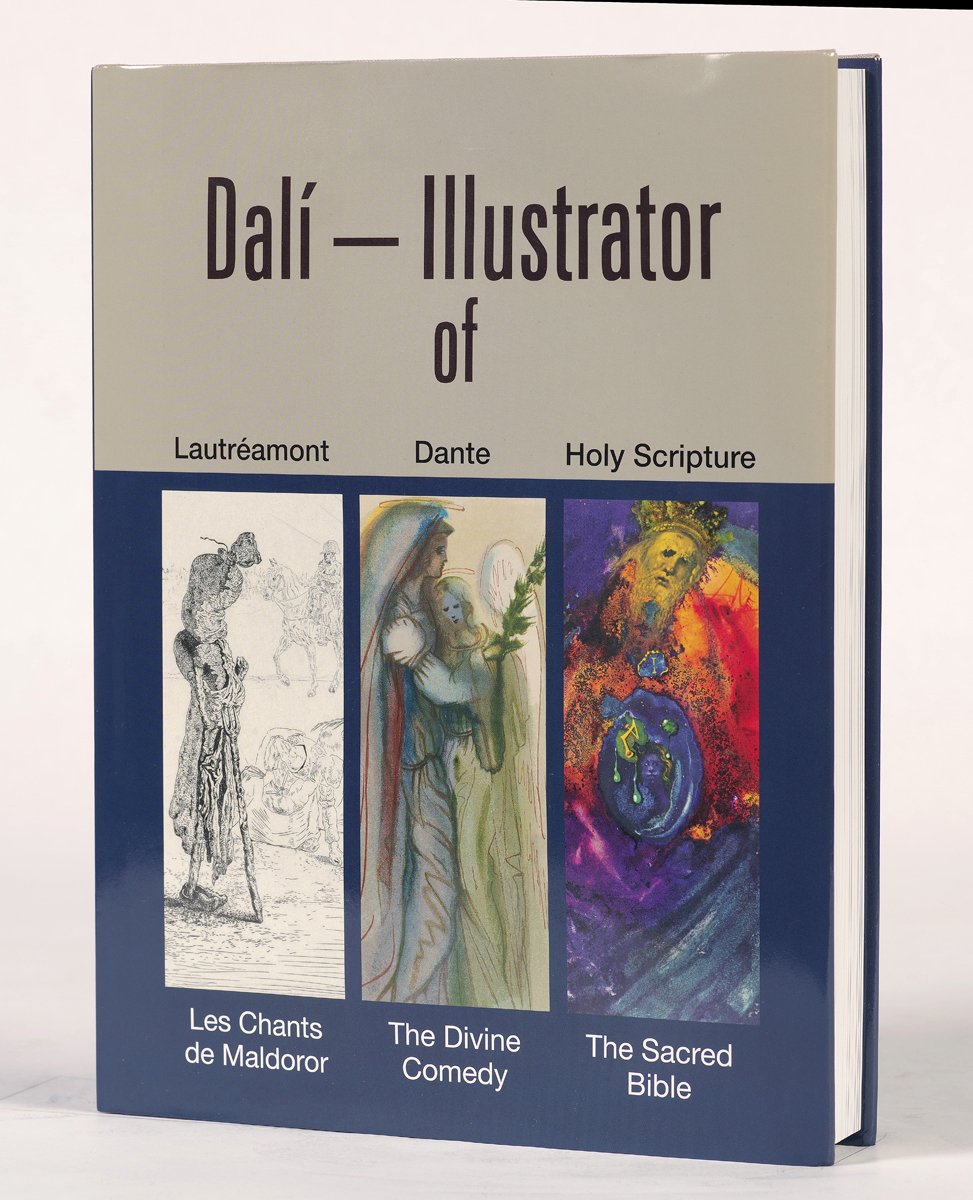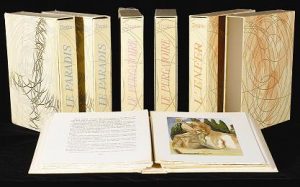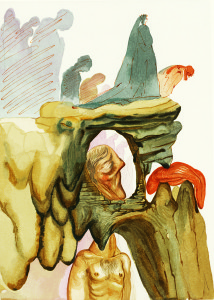Salvador Dali and the Divine Comedy
The Park West Gallery Dali Collection is one of the most thoroughly documented and authenticated collections of Salvador Dali artwork in the world. For over 40 years, Park West has been a reliable resource for authentic work from master Salvador Dali.
You can view our available Dali works here.
About the Divine Comedy
The Divine Comedy suite consists of 100 color wood engravings created between 1960 and 1964 after 100 watercolors painted by Salvador Dali between 1951 and 1960. More than 3,000 blocks were necessary to complete the engraving process.
In the early 1950s Salvador Dali was invited by the Italian government to commemorate the birth of Dante, Italy’s most famous poet, by producing a series of illustrations for a full-text, deluxe edition of Dante’s masterpiece, the Divine Comedy. Ultimately, the illustrations were not well received by the Italians, as it was deemed inappropriate for a Spanish painter (rather than an Italian painter) to have illustrated the work of Italy’s greatest poet.
Even though the project was dropped in Italy, Dali and French publisher Joseph Foret continued to pursue publication of the Divine Comedy. Mr. Foret acted as broker between Salvador Dali and Les Heures Claires, a French editing and publishing house that ultimately took full charge of the project.
The Engraving Process
Working in conjunction with Salvador Dali, Raymond Jacquet, with his assistant Jean Taricco, created the blocks necessary for the engraving process. While frequently referred to as “wood” blocks, they were actually a resin-based matrix.
Salvador Dali directly supervised the production of the works and gave final approval for each of the finished engravings.
Once the project was complete, all of the Divine Comedy blocks were destroyed. The engraving process required the block be cut, a single color applied, then printed to the substrate (e.g. paper, silk, etc.). The block was then cleaned and cut away for the next color.
As the engravings were made, the image was progressively “printed,” and the block was progressively destroyed. The process required great skill and resulted in works of spectacular beauty which cannot be reproduced in a manner that is not detectable as a reproduction, even to the casual observer.
“Divine Comedy” Museum Tour
An exciting new museum exhibition is currently touring the United States aimed at calling attention to Dalí’s revolutionary work in the field of book illustration.
The exhibition, “Salvador Dalí’s Stairway to Heaven,” features complete portfolios of Dalí’s illustrations for two of his most ambitious publishing projects—his artwork for unforgettable editions of Dante’s “The Divine Comedy” and Comte de Lautréamont’s “Les Chants de Maldoror.”
“Salvador Dalí’s Stairway to Heaven” is sponsored by the Park West Foundation. It opened at the Hilliard University Art Museum in Lafayette, Louisiana on June 8 and will complete its museum tour in February 2021. The exhibition was organized by Carole Sorell, Inc. and curated by David S. Rubin.
“We are thrilled to bring this intriguing exhibition to respected art institutions across the nation,” says Diane Pandolfi, Park West Foundation Director. “By exposing a fresh audience to Dalí’s illustrations, we hope to inspire curiosity, wonderment, and a new appreciation for one of history’s best-known artists.”
Salvador Dalí’s Stairway to Heaven” will be touring the United States through 2021. The exhibition schedule is as follows:
- Hilliard University Art Museum (Lafayette, Louisiana): June 8, 2018 – January 18, 2019
- Bradbury Art Museum (Jonesboro, Arkansas): March 7, 2019 – April 10, 2019
- Oglethorpe University Museum of Art (Atlanta, Georgia): May 3, 2019 – August 31, 2019
- The University of Texas at San Antonio Main Art Gallery (San Antonio, Texas): October 16, 2019 – November 15, 2019
- Plains Art Museum (Fargo, North Dakota): December 19, 2019 – May 20, 2020
- Fort Wayne Museum of Art (Fort Wayne, Indiana): June 13, 2020 – August 16, 2020
- Mabee-Gerrer Museum of Art (Shawnee, Oklahoma): September 11, 2020 – November 1, 2020
- Biggs Museum of American Art (Dover, Delaware): December 4, 2020 – February 28, 2021
“Salvador Dalí’s Stairway to Heaven” is the latest in a series of museum exhibitions organized by the Park West Foundation, the nonprofit arm of Park West Gallery. All artwork in the exhibition is on loan from the Park West Museum.
Related Links:
- Collect Original Graphic Works by Salvador Dali in Our New Fall Sale
- The Strange History Behind Salvador Dalí’s “Divine Comedy”
- Take an Inside Look at Salvador Dalí’s Latest Museum Exhibition
- Stairway to Heaven: Fascinating New Salvador Dalí Exhibition Begins U.S. Tour
- 5 Facts You May Not Know About Disney and Dali’s Lost Project ‘Destino’
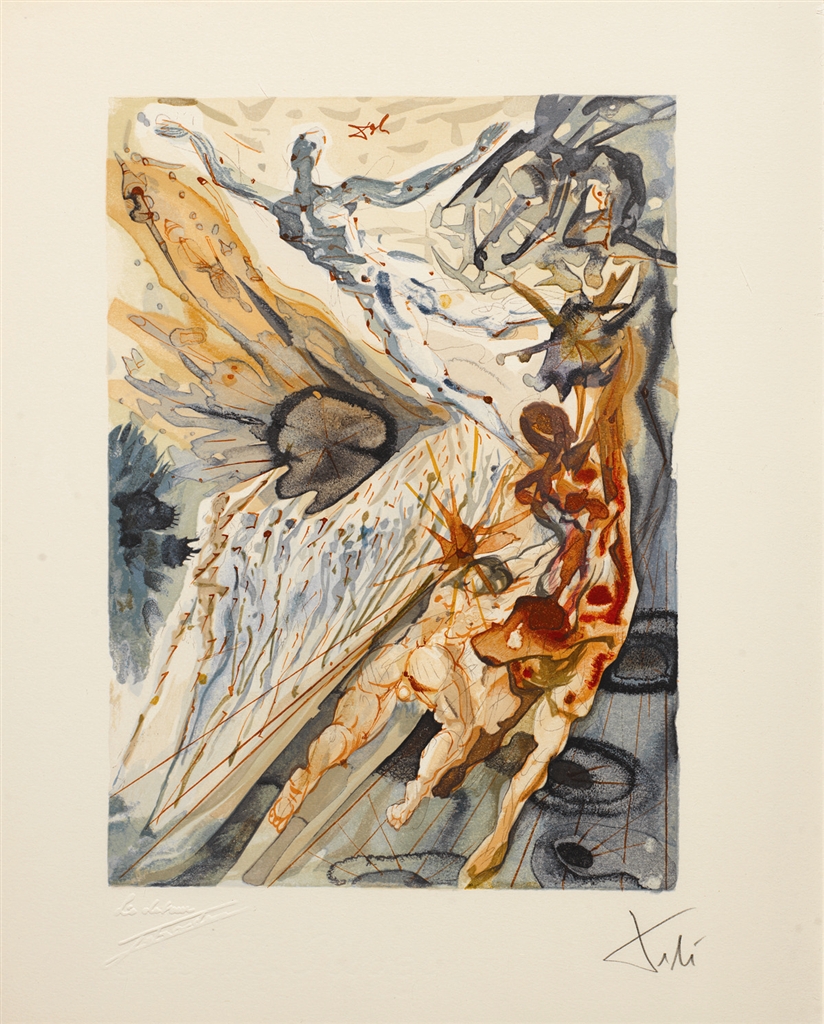
“Meeting of the Two Groups of Lechers” (Recontre de deux troupes de luxurieux; 1960). From “Divine Comedy—Purgatory 26,” Salvador Dalí.
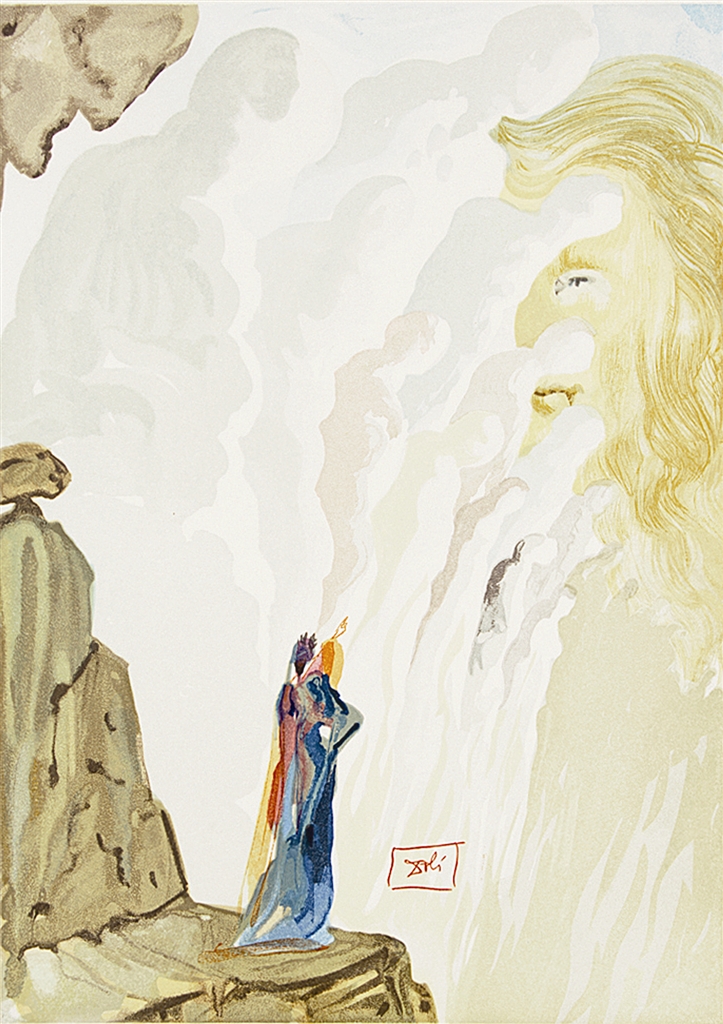
“The Beauty of the Sculpture” (La beaute des sculptures; 1951-64). From “Divine Comedy—Purgatory 12,” Salvador Dalí.
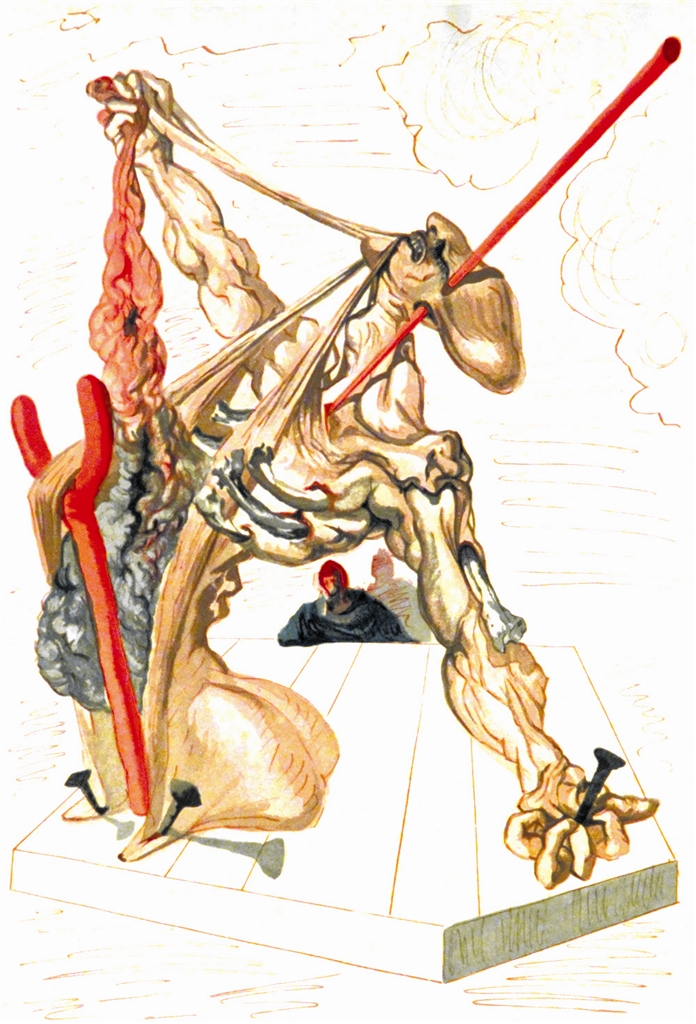
“Falsifiers” (Les falsifcateurs; 1951-64). From “Divine Comedy—Inferno 29,” Salvador Dalí.
For information about collecting works from Dali’s Divine Comedy series, contact our gallery consultants at (800) 521-9654 ext. 4 during business hours or at sa***@*************ry.com.
A comprehensive history of Dali’s Divine Comedy can be found in the 2006 book “Dalí—Illustrator” by noted Dalí expert Eduard Fornés.
